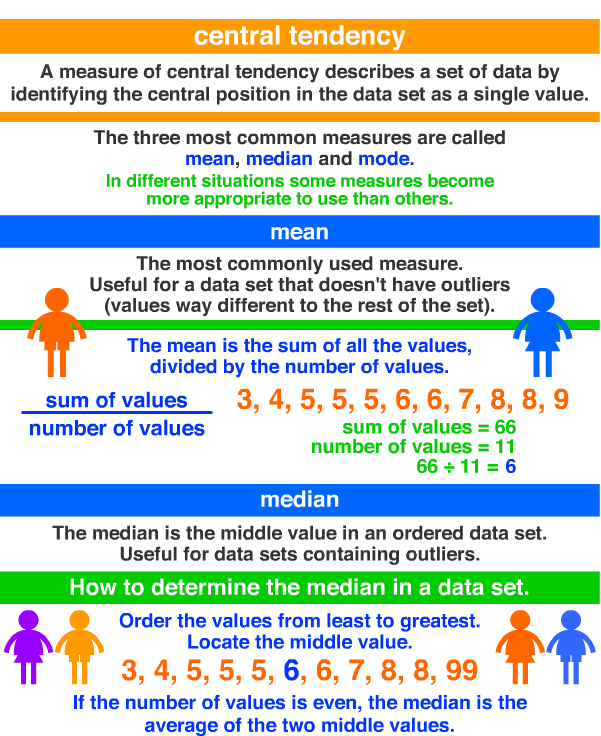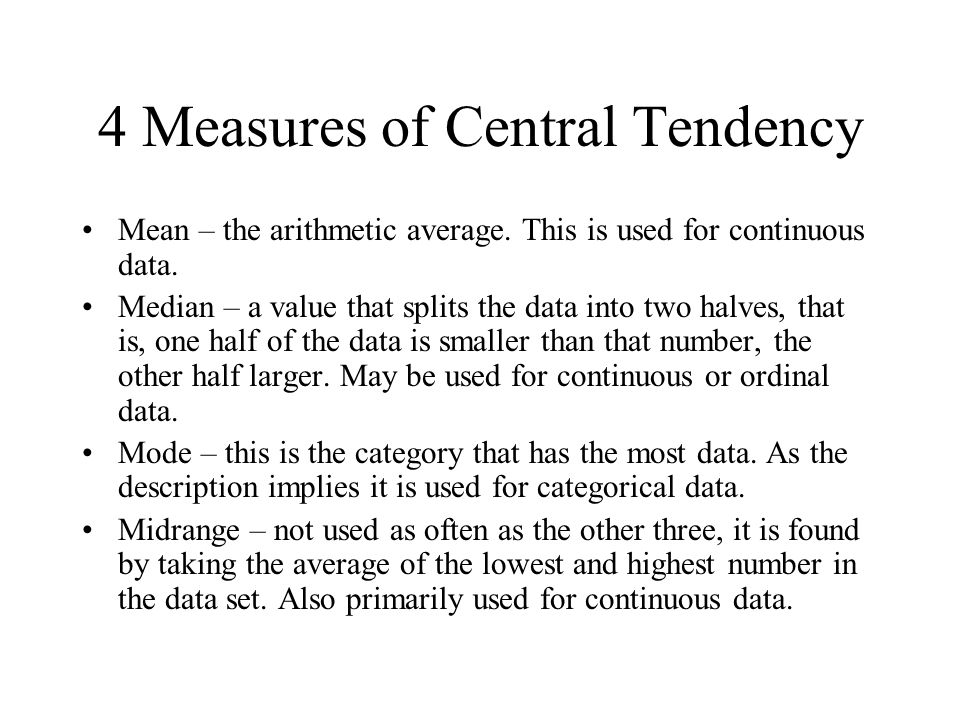
Their importance is because of the following reasons. The mode is the most frequent value.

Measures of central tendency or averages give us one value for the distribution and this value represents the entire distribution.
Meaning of central tendency in statistics. In statistics the central tendency is the descriptive summary of a data set. Through the single value from the dataset it reflects the centre of the data distribution. Moreover it does not provide information regarding individual data from the dataset where it gives a summary of the dataset.
Measures of central tendency help you find the middle or the average of a data set. The 3 most common measures of central tendency are the mean median and mode. The mode is the most frequent value.
The median is the middle number in an ordered data set. The mean is the sum of all values divided by the total number of values. Central tendency is a descriptive summary of a dataset through a single value that reflects the center of the data distribution.
Along with the variability dispersion of a dataset central tendency is a branch of descriptive statistics. The central tendency is one of the most quintessential concepts in statistics. Central tendency is defined as the statistical measure that identifies a single value as representative of an entire distribution It aims to provide an accurate description of the entire data.
It is the single value that is most typicalrepresentative of the collected data. A measure of central tendency is a single value that represents the center point of a dataset. This value can also be referred to as the central location of a dataset.
In statistics there are three common measures of central tendency. A measure of central tendency is a summary statistic that represents the center point or typical value of a dataset. These measures indicate where most values in a distribution fall and are also referred to as the central location of a distribution.
You can think of it as the tendency of data to cluster around a middle value. Chaplin 1975 defines central tendency as the representative value of the distribution of scores. English English 1958 define measure of central tendency as a statistic calculated from a set of distinct and independent observations and measurements of certain items or entity and intend to typify those observations.
Thus we can say that central tendency means the methods of finding out the central value or average value of a statistical series of quantitative information. Guilford has pointed out that an average is a central value of a group of observations or individuals. Measures of central tendency are very useful in Statistics.
Their importance is because of the following reasons. I To find representative value. Measures of central tendency or averages give us one value for the distribution and this value represents the entire distribution.
In this way averages convert a group of figures into one value. Central tendency is a descriptive summary of a dataset through a single value that reflects the center of the data distribution. Along with the variability dispersion of a dataset central tendency is a branch of descriptive statistics.
The central tendency is one. Meaning of CENTRAL TENDENCY. What does CENTRAL TENDENCY mean.
Information and translations of CENTRAL TENDENCY in the most comprehensive dictionary definitions resource on the web. In statistics a central tendency is a central value or a typical value for a probability distribution. It is occasionally called an average or just the center.
The term measure of central tendency can be described as a single value that is used to define a set of data by classifying the central position within that set of data. This is the reason the measures of central tendency are also known as the measures of central location. It is also categorised as summary statistics.
Central Tendency Measures of Central Tendency. Mean The sum of all scores divided by the number of scores. Median The score in the middle when the.
The 3 main types of descriptive statistics concern the frequency distribution central tendency and variability of a dataset. Distribution refers to the frequencies of different responses. Measures of central tendency give you the average for each response.